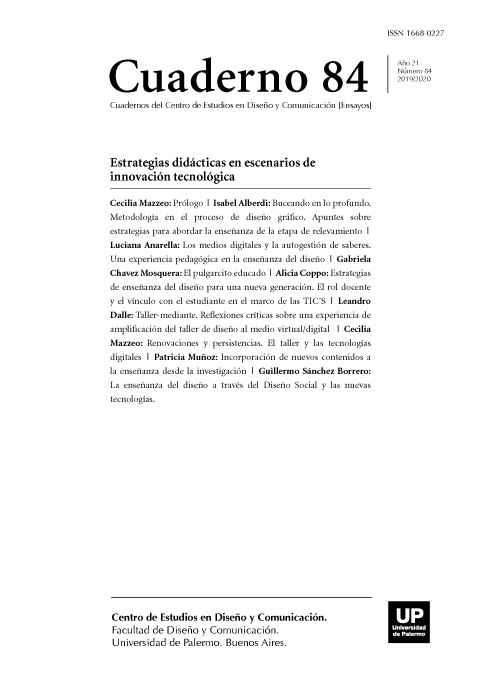Renovaciones y persistencias. El taller y las tecnologías digitales
Abstract
Digital technologies have produced changes of different magnitude in the disciplines of Design. These are verified in the object of knowledge and the object of teaching but not in the mode of teaching. However it is real the difference between what happens in the workshops and what happens in certain imaginary in the workshops. That difference has its origin in the object of knowledge, therefore in the object of teaching and not on the way in which objects are produced. Then, the greater or lesser presence of the practice in the workshops is based on the very concept of workshop on the part of those who is responsible for the planning workshops. In its conception on the teaching of the disciplines, and above projectual is, in its conception of the discipline itself. In both the mode in which you choose to teach a know implies a conception of this knowledge and also a pre-conception about who will use this knowledge. The Design becomes how do we teach that we understand by design and that we believe that the University Designer must form.
References
Astolfi, J. P. (2001). Conceptos clave en la didáctica de las disciplinas. DIADA Editorial.
Bruner, J. (2000). La educación, puerta de la cultura. Visor Editorial.
Csikszentmihalyi, M. (1998). Creatividad. El fluir y la psicología del descubrimiento y la invención. Paidós Editorial.
Mercer, N. (1997). La construcción guiada del conocimiento. El habla de profesores y alumnos. Paidós Editorial.
Romero, R. (1992). Grupo. Objeto y teoría. Vol. II. Lugar Editorial.
Schön, D. A. (1992). La formación de profesionales reflexivos. Hacia un nuevo diseño de la enseñanza y el aprendizaje en las profesiones. Temas de educación. Paidós. Notas del Seminario: Hacia una didáctica del proyecto. Dra. María Ledesma. FADU UBA 2006.
Los autores/as que publiquen en esta revista ceden los derechos de autor y de publicación a "Cuadernos del Centro de Estudios de Diseño y Comunicación", Aceptando el registro de su trabajo bajo una licencia de atribución de Creative Commons, que permite a terceros utilizar lo publicado siempre que de el crédito pertinente a los autores y a esta revista.


